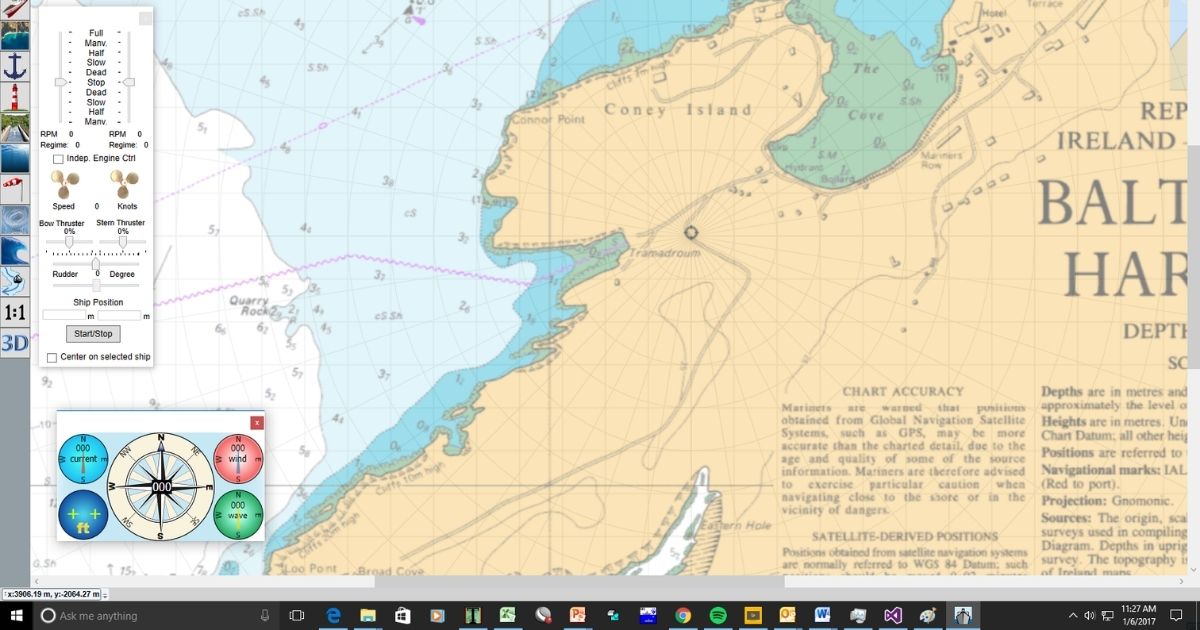DYNAFLOW, INC. announces the release of its new and improved ship-maneuvering software DYNASIM©. DYNASIM© incorporates state of the art models of ship hydrodynamics and achieves capabilities not found on more expensive stand-alone full-mission simulators.
The software runs on Windows platforms and has a user-friendly interactive graphics interface. The ship simulator employs modular mathematical models for the various components of the ship (hull, propellers, rudders, thrusters), environmental effects (wind, current, waves), and waterways (bottom, pier walls), to achieve a faithful mathematical representation of the ship. DYNASIM© can also simulate different types of ships including twin-screw ships and tug boats. These models are based on collective experience resulting from various hydrodynamics modeling work. DYNASIM© Version 4.0 has a completely new code structure that enables the simulator to provide more reliable, robust and smooth simulation experiences for the user. With this completely refreshed graphic user interface (GUI), Version 4.0 enables the user to perform more intuitive and enhanced simulations.
DYNASIM© offers three simulation modes. In the fully user-controlled mode, the user controls the rudder, the engines, and lateral thrusters through a graphic control panel to simulate navigation of a ship. In the certification maneuver mode, DYNASIM© can simulate a ship performing one of the classical maneuvers recommended by the International Maritime Organization (IMO) for evaluating maneuverability and hydrodynamic characteristics. Under the auto-pilot mode, the simulator can model multi-ship traffic and interactions. Ship traffic rules in the simulation are based on the U.S. Code of Conduct of Vessels. Traffic parameters can also be adjusted by the users.
DYNASIM© can be used to generate multiple ship tracks to evaluate harbor safety from a system perspective and estimate the likelihood of collision for various types of vessels, traffic densities, effects of navigation channel geometries and environmental conditions. It can also be used for continual training of masters and pilots in making decisions during ship operations to minimize human error, and by naval architects, harbor designers and port managers for structures and waterway design, modification, improvement and implementation of safety measures.


